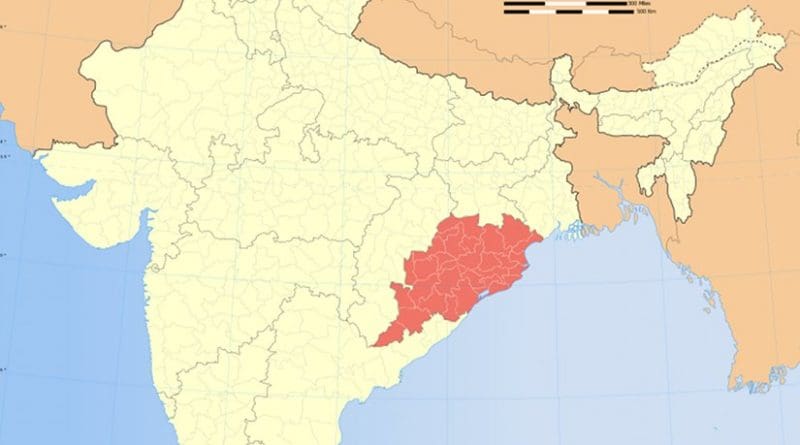A Bridge Over River Gurupriya – Analysis
In Odisha’s Malkangiri district, a 910 m-long bridge over river Gurupriya is being attempted to be built for the last 34 years. This could arguably be the most delayed infrastructure building project in the world. In a layman’s calculation, had the state succeeded in building merely 27 m of the bridge per year, the project would have been completed by early 2016. This project, like many others, speaks poorly of the much hyped commitment of the state to bring development to remote areas. It also questions the popular narrative that left-wing extremism (LWE) and not official complacency is the primary hurdle in transforming the lives of people in conflict-affected areas.
As the country’s intellectual debates hovered over the imposition of the emergency by the Indira Gandhi government, the construction of a dam that would provide water to the Balimela hydroelectric project created an enormous situation. People living in 151 villages, spread over 900 sq km, discovered that they suddenly belonged to the ‘cut-off’ area. Legally, they belong to Odisha’s Malkangiri district, but the physical connectivity between the hamlets and the district headquarter have vanished. Reaching Malkangiri town, which caters to the health, educational and administrative needs of the people involved walking, bus journeys, boat rides, and more walking through forests, rivers, and rocky roads. In some cases these arduous journeys spanned over more than 50 hours.
The Balimela power project provides 510 MW of electricity to Odisha, an electricity surplus state. However, the narratives of abundance and wretched lives co-exist. An Indian Express story in September 2016 summed up a villager’s frustration over the last four decades. “The reservoir may have provided electricity to Odisha, but it has ensured that we remain a pariah. Most of our lives are spent travelling across the river. Everyday I just dream of a bridge crossing the river.” Understandably, for the country’s urban and semi-urban class, it is difficult to appreciate the condemned lives of the hundreds of villagers who live in the ‘cut-off’ area. Whether such sacrifices over lifetimes can be compared to the lives of soldiers protecting the country’s borders is a valid question.
Not surprisingly, development has eluded the ‘cut-off’ villages since the late 1970s. Only one primary health centre has functioned all these years in this area. Officials have had to travel on motorbikes to reach the villages, and on most occasions, have chosen not to, citing a range of difficulties. The villagers have not had any such luxury. Post-school educational facilities existed beyond the river. For serious health issues and complicated pregnancy cases, the river had to be crossed. Apart from a large number of personal accounts, no official estimates of the lives lost due to the lack of connectivity exist.
While the topography of the region have posed challenges, the consolidation of the Communist Party of India-Maoist (CPI-Maoist) in the area further complicated the problem. Extremists from bordering Andhra Pradesh established a safe haven. Akkiraju Haragopal alias Ramakrishna of the CPI-Maoist made the ‘cut-off’ area his base. In June 2008, 38 personnel of the Greyhound commando force drowned in the Gurupriya river after being attacked by Maoists. In 2011, then Malkangiri district collector and a junior engineer were abducted by Maoists while on a visit to the area. The collector was on a motor bike and paid the price for being responsive to the needs of the people.
The plan for the bridge has existed on paper since 1956, although the first tender was floated in 1982. Since then, the government has requested bids on 10 instances for the construction of the bridge, but no work happened till 2016. Many contractors cited the threat of the extremists. The first Border Security Force (BSF) camp came up in the area in 2015 and another contract was floated in early 2016. This time the cost was INR 172 crore, 23 times more than the first tender in 1982, worth INR INR 7 crore. The bridge to be constructed over the narrowest width of the 68 km-long river will re-establish connectivity. Ambulances and officials will be able to reach the villages. Villagers will be able to reach Malkangiri town. The bridge will also help security forces intensify their anti-extremist operations.
The fresh deadline for completing the project is September 2017. The bottleneck now is not posed by the Maoists, but by the lack of funds. Of the total INR 172 crore required for the construction of the bridge, New Delhi has so far sanctioned INR 45 crore. The Indian government’s demonetisation drive that has led to a shortage of currency notes for daily payment to labourers poses an additional challenge for the Kolkata-based Royal Infra Construction that is building the bridge. While the weekly requirement is to the tune of INR 2.5 lakh, only INR 1 lakh is available from the banks. Even the river, flowing at a height of 458 m, which is 6 m more than the maximum level with which capping of piles and construction of piers can be done, is unfriendly. According to estimates, the 452 m level wwill notbe reached till March 2017.
Hope floats for the 30,000 people in the ‘cut-off’ area.
This article appeared at IPCS

